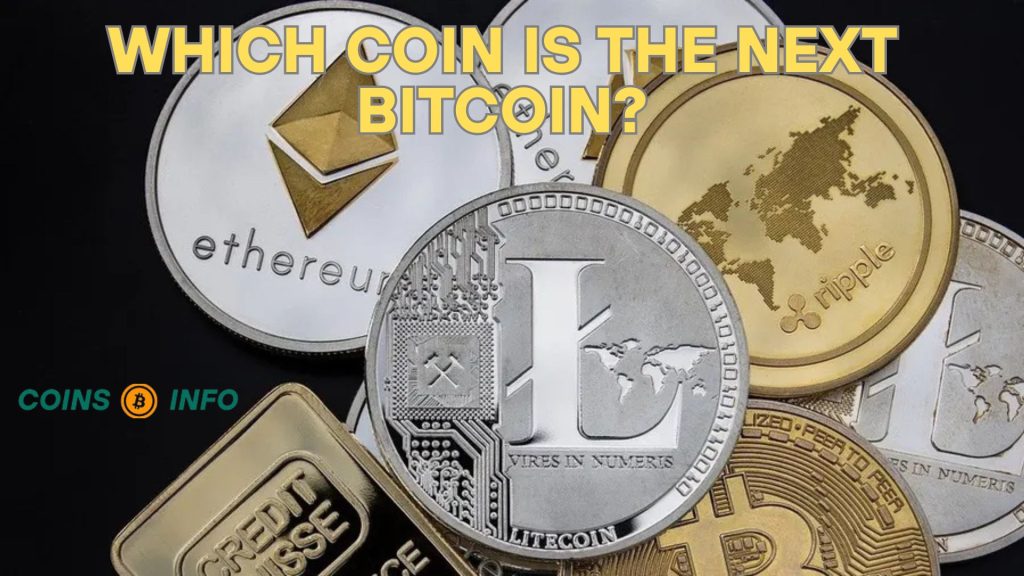Which coin is the next Bitcoin? By creating a decentralized digital currency, Bitcoin has transformed the financial industry since its launch in 2009. Being the first and most well-known cryptocurrency, Bitcoin established the criteria for decentralization, security, scarcity, and worldwide relevance—all of which are now sought after in future coins. However, investors and enthusiasts sometimes wonder, “Which coin could be the next Bitcoin?” as the drive continues to expand and change.
It’s a complicated answer. Although no other cryptocurrency has been able to completely duplicate the impact of Bitcoin, several intriguing alternatives have emerged with distinct benefits, vibrant communities, and the potential to become widely adopted. Here is a detailed analysis of the leading candidates and their qualifications to be considered “the next Bitcoin.”
Ethereum (ETH): The Smart Contract Pioneer.
Ethereum is widely seen as Bitcoin’s most formidable counterpart. Smart contracts, which are self-executing scripts that enable decentralized apps (dApps) to operate without middlemen, were first offered by Ethereum in 2015. While Bitcoin serves as “digital gold,” Ethereum is more like a global computing platform.
Why It Could Be the Next Bitcoin:
- Massive ecosystem: Ethereum powers thousands of dApps, NFTs, and DeFi projects.
- Developer dominance: It has the largest number of active developers after Bitcoin.
- Transition to sustainability: Its switch to Proof-of-Stake has drastically reduced its energy consumption.
Challenges:
- High transaction fees (though layer-2 solutions are addressing this).
- Scalability is still a concern, although upgrades like Ethereum 2.0 aim to solve it.
Solana (SOL): The Speed Specialist.
Solana has gained massive attention for its blazing-fast transaction speeds and low fees. Designed for scalability, Solana can handle over 60,000 transactions per second, far surpassing Bitcoin and Ethereum in this regard.
Why It Stands Out:
- Low fees: Makes micro-transactions and NFT trading more accessible.
- Rapid growth: Solana has built a vibrant NFT and DeFi ecosystem.
- Strong community: Developer support and VC backing are significant.
Risks:
- History of network outages.
- Centralization concerns due to limited validator distribution.
XRP (Ripple): The Bank-Friendly Token.
XRP is designed for fast, low-cost cross-border payments. While not decentralized in the same way as Bitcoin, Ripple Labs’ XRP Ledger is gaining traction among financial institutions.
Reasons for Potential:
- Institutional use: Banks and remittance services are adopting RippleNet.
- Speed: Transactions take seconds compared to Bitcoin’s 10-minute block time.
- Low cost: Tiny transaction fees make it ideal for global payments.
Legal Cloud:
-
XRP has faced regulatory challenges, especially a prolonged legal battle with the U.S. SEC. A favorable outcome could boost its adoption.
Litecoin (LTC): Bitcoin’s Little Brother.
Often called the “silver to Bitcoin’s gold,” Litecoin was one of the earliest altcoins. It shares many technical similarities with Bitcoin but offers faster block times and a more abundant supply.
Why It’s a Contender:
- Longevity: Trusted and battle-tested over the years.
- Lower fees and faster transactions: Better suited for everyday spending.
- Widespread acceptance: Accepted by many merchants and exchanges.
Limitations:
-
Lacks the innovation and ecosystem ripening seen in Ethereum or Solana.
Emerging Candidates: Layer-2 and Utility Tokens.
While large-cap coins dominate the headlines, newer technologies built on or alongside Bitcoin—such as Layer-2 solutions—are attracting attention. For example:
- Stacks (STX) enables smart contracts on Bitcoin.
- Bitcoin Hyper (HYPER) aims to increase Bitcoin with staking and dApps.
These projects combine Bitcoin’s security with added functionality. However, they remain speculative and are still early in development.
Why There May Never Be “Another Bitcoin”
Bitcoin is unique. It was the first, has the strongest network effect, and operates without a central authority or founder (Satoshi Nakamoto remains anonymous). It is truly decentralized and has become a symbol of financial freedom for many.
Key Bitcoin Advantages:
- Scarcity: Only 21 million will ever exist.
- Security: Highest hash rate of any blockchain.
- Store of value: Seen as “digital gold.”
Other coins may surpass Bitcoin in speed or features, but replicating its origin story, ideology, and global recognition is virtually impossible.
Final Thoughts.
It would be wiser to ask, “What issue does this coin solve?” rather than searching for the “next Bitcoin.” Ethereum provides a solution for decentralized computing. Solana makes speed her priority. Cross-border payments are the focus of XRP. Faster transactions are made possible via Litecoin. New scalability and governance experiments are available with emerging tokens.
A number of coins are establishing useful and disruptive positions in the digital economy, even though none may ever become the next Bitcoin in the same way. Astute investors know the risks and benefits of each project, diversify, and keep up to date.
Bitcoin will probably continue to rule the cryptocurrency market, but it won’t be the only one.
